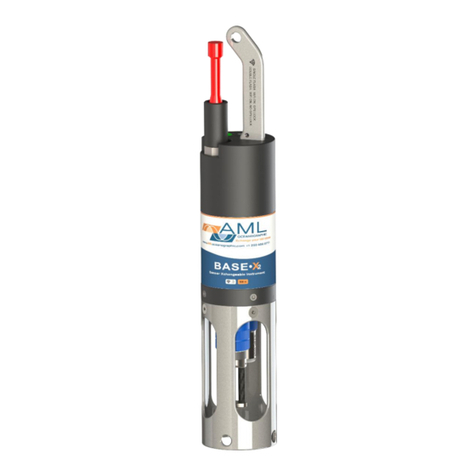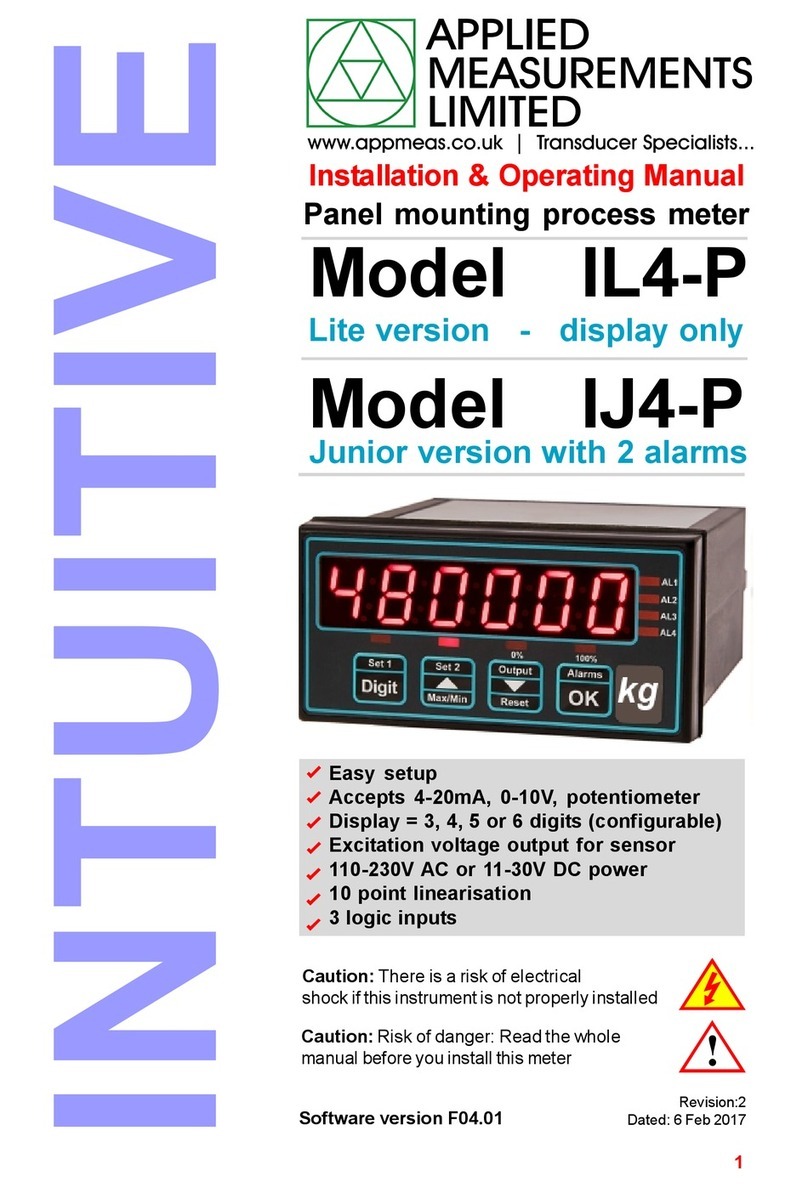
1 Introduction
The AML-3 series of instruments is a configurable family of multiparameter sondes designed for
a wide range of data collection applications. The ‘3’ designation refers to the number of sensors
that may be simultaneously installed on the instrument’s endcap. One additional sensor may be
connected externally, allowing up to 4 sensors in total.
There are two primary configurations of instruments in the AML-3 family: the AML-3 LGR, a
self-powered instrument designed for profiling applications, and the AML-3 RT, an externally
powered instrument intended for Real Time applications. While nearly identical in size and form
factor, the two configurations differ in a few key features which specialize them for their
respective applications.
Instruments with the LGR designation are self-powered via a rechargeable internal battery and
have a mechanical on/off switch adjacent to their shackle. These instruments are designed to
internally log sensor measurements and transfer data post-deployment. These instruments are
most commonly used for multiparameter profiling.
Real-Time instruments (ie. AML-3 RT), in contrast, are designed to stream data while in-situ
(though they have the ability to internally record data as well). Both power and communication
to these instruments is facilitated via a waterproof connector located adjacent to the shackle.
These instruments rely on external power for operation and the application of this power turns
the instrument on in lieu of a mechanical switch These instruments are commonly used in
moored applications, buoys, underwater observatories, and ROVs.
This manual describes the operation of the Real-Time version, the AML-3 RT.
1.1 Instrument Overview
AML-3 instruments are highly customizable and may be equipped with a wide range of
user-specific sensors, functionality, and features. The instrument described here is intended to
be a representative example of a typical setup and therefore may not be identical to the
Reader’s. The Reader is directed to any unit-specific supplementary documentation provided
with their instrument for information on features and functionality not described here.
Figure 1 depicts a typical AML-3 RT arrangement.
AML Oceanographic Ltd. 6/44





























